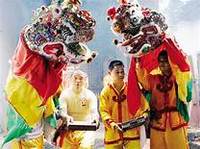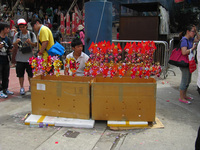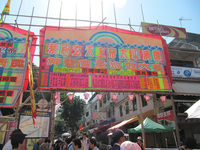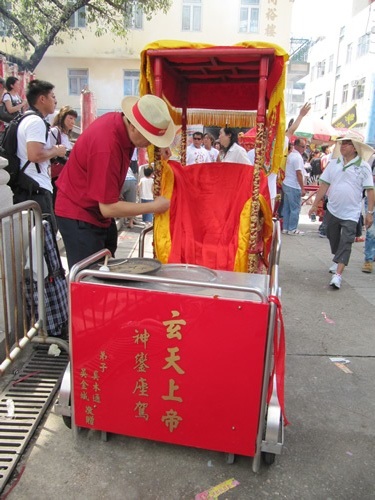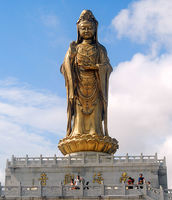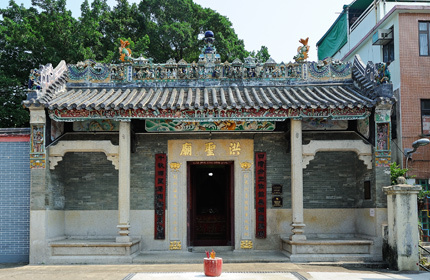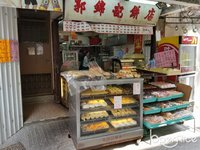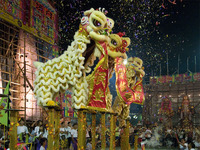| Chinese unicorn dances 1600 | Chinese Unicorn Dance 麒麟舞 | | Folk art
Chinese unicorn
Dance |
|
|
Subject:Folk art
Chinese unicorn
Dance |
Description:It is a folk art from Chinese traditional culture.The Chinese unicorn dances originated from the Central region of China. It was taken from the unicorn representing Xiangrui and Guotai Min'an. It is similar to lion dance. It appears in festivals and celebrations. There are dances, which must be played in music or in the drama. It is now circulating in Yunnan Province, Henan Province, Hebei Province, Guangdong Province, and Shanxi Province. The unicorns of various regions and ethnic groups have different shapes. The most common unicorn dance in China comes from Guangfu and Hakka traditional Guangfu and Hakka dance unicorns. It is now included in the list of China's national intangible cultural heritage and Hong Kong's intangible cultural heritage [show more]
|
|
| windmill | Chinese-style Windmill Foil Windmill Lucky Windmill 風車 | Physical Object | Windmill |
|
|
Type:Physical Object Subject:Windmill |
Description:Windmills are a symbol of luck in the Chinese culture, and will hence bring luck when spun. They are bright and colourful, with red as its primary colour. Designs range from a single windmill to elaborate combination of 10. These foil windmills are popular also during many other Chinese festivals and celebrations, such as the Lunar New Year. Its significance in the Cheung Chau bun festival is extended from the Taoist temple Che Kung in Sha Tin Hong Kong, where worshippers spin a brass fan-shaped wheel three times to bring good fortune. The Che Kung Temple is named after a commander in the Song dynasty, who is famous for ridding villages of plagues. With the bun festival rooted in a similar tale, it is a favoured souvenir to this day. [show more]
|
|
| dragondance | Dragon Dance 舞龍 | Performance | Dance |
|
|
Type:Performance Subject:Dance |
Description:Dragon dance is very similar to Lion dance. It is also a traditional Chinese dance. The difference is that the lion costume is replaced by a long flexible figure of dragon. A team of performers use long poles to control the dragon model and mimic the imagined movement of dragons. [show more]
|
|
| flowerplaque | Flower Plaque Bamboo Banner 喜慶花牌 花匾 | Physical Object | Banner
Entrance |
|
|
Type:Physical Object Subject:Banner
Entrance |
Description:Flower plaques are a type of traditional Chinese craft made to be a temporary banner and usually serves as an entrance to areas of celebration. It is built as a sign of prosperity, luck and happiness to celebrate festivals, weddings and inaugurations. In the Cheung Chau Bun Festival, they are used to express gratitude to the gods for the ongoing peace, and to pray for good weather in the fishing island. They are decorated using bamboo, paper, fabric and plastic in red and fluorescent colours. It is said that flower plaques are derived from traditional arched gateways (牌坊) as a temporary set up. [show more]
|
|
| 神鑾座駕unknown | God's Seat 神鑾座駕 | Physical object | Mobile seat |
|
|
Type:Physical object Subject:Mobile seat |
Description:This seat is mobile and was developed to transport the statues and god figures from the temple to temporary temples and the place where the spirit assuaging ceremony was held.
|
|
| GuanYin(unknown) | Guan Yin 觀音 觀世音菩薩 | Deity | Deity
God |
|
|
Type:Deity Subject:Deity
God |
Description:Guan Yin is the most commonly used Chinese translation of the bodhisattva known today as 'Avalokitesvara'.She is often known as the "Goddess of Mercy" in English. The Chinese name Guanyin, is short for Guanshiyin, which means "[The One Who] Perceives the Sounds of the World".Guanyin also refers to the bodhisattva as adopted by non-Buddhist religions such as Daoism, Chinese folk religions and other religions.It is believed that Guanyin originated as the Bodhisattva Avalokiteśvara. [show more]
|
|
| HungShingTemple1813 | Hung Shing Temple 長洲洪聖廟 | Physical object | Temple
Cheung Chau Bun Festival |
|
|
Type:Physical object Subject:Temple
Cheung Chau Bun Festival |
Description:Hung Shing is a deity with high regard in the Southern China, also named the “God of South Sea”. Worshippers believe Hung Shing could save them from maritime distress. In the Chui Dynasty (隋朝) and Tong Dynasty (唐朝), Hung Shing upraised by the Emperor as the “King of Kwan Li” (廣利王) which represented good fortune. In the Song Dynasty (宋朝), the “King of Kwan Li” renamed to “King of Hung Shing Kwan Li” (洪聖廣利大王). According to legend, Hung Shing was a virtuous official in the Tong Dynasty named Hung Hei, who had established an observatory which enabled accurate weather prediction. It was said that his spirit had saved many lives from typhoons and local disasters. Thus, people built a temple to worship him. [show more]
|
|
| kwokkaming2018 | Kwok Ka-Ming Jason 郭嘉明 | Person | |
|
|
Type:Person |
Description:Kwok has been champion of the individual races for 7 times since 2005. He was raised in Cheung Chau and is a firefighter trainer on the island.
|
|
| KwokKamKeeCakeShop19 | Kwok Kam Kee Cake Shop 郭錦記餅店 Kwok Kam Kee Bakery | Food | Cheung Chau Buns shop
Cheung Chau Bun Festival |
|
|
Type:Food Subject:Cheung Chau Buns shop
Cheung Chau Bun Festival |
Description:This 40-year-old bakery supplies Ping On Bao (peace and prosperity buns), the round white buns with a lucky red stamp, for the Bun Festival. You can get the fresh-from-the-steamer buns, traditionally filled with sesame paste, lotus-seed paste or red-bean paste, at 2pm every day. The shop supplies about 60000 buns every festival. It produces 20 buns a minute by using a HK$400,000 machine, manufactured by Rheon of Japan, which is double the rate of making buns by hand. [show more]
|
|
| liondance | Lion Dance 舞獅 | Event | Dance |
|
|
Type:Event Subject:Dance |
Description:Lion dance is a traditional Chinese dance mimicking lion movements. Two performers are covered by a lion costume and they perform moves such as simple head movements, or jumping up and down on small platforms on some very high poles. It is usually performed in traditional Chinese festivals such as the Chinese New Year to bring good fortune. It is accompanied by Chinese drums and cymbals. [show more]
|
|

